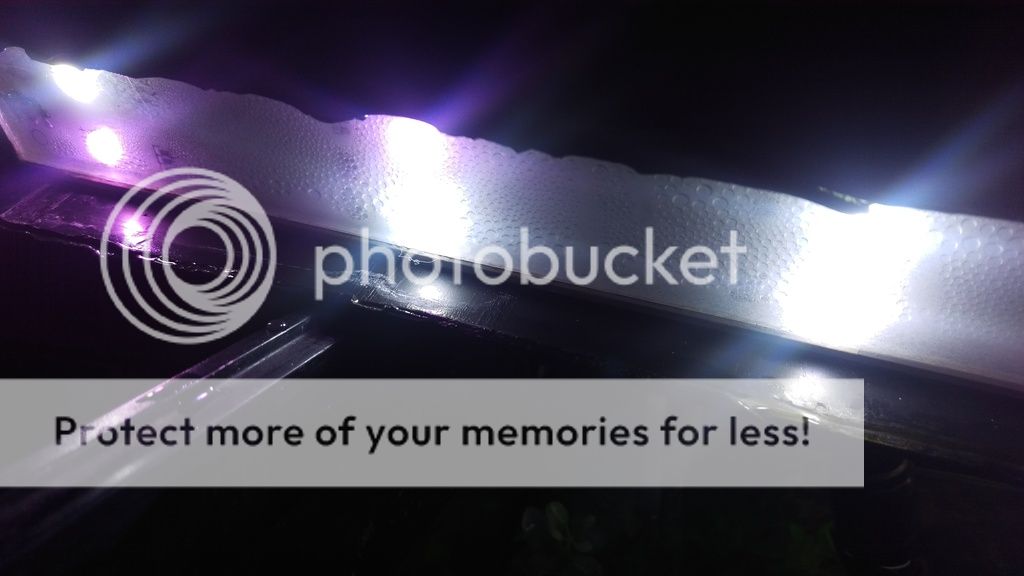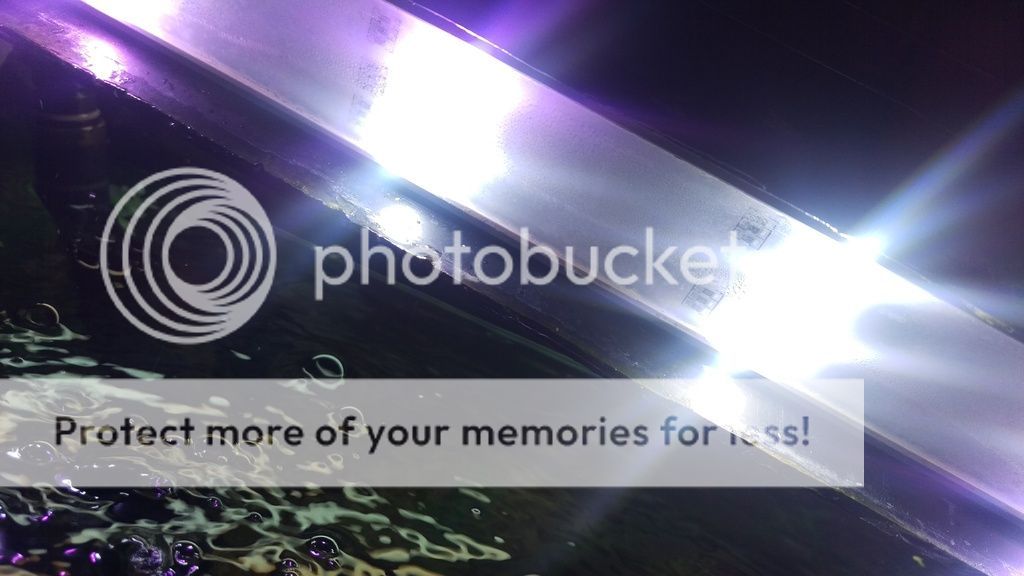You are using an out of date browser. It may not display this or other websites correctly.
You should upgrade or use an alternative browser.
You should upgrade or use an alternative browser.
Has anyone had this happen to there leds?
- Thread starter Ironfish
- Start date
The April FOTM Contest Poll is open!

🏆 Click to vote! 🏆
StandbySetting
Fish Aficionado
Are there any instructions with them that mention additional cooling? I can only imagine they've over heated.
http://aquaraylighting.co.uk/wp-content/uploads/2014/12/AquaBar-instructions.pdf
they are leds they dont heat up silly billy lol
they are leds they dont heat up silly billy lol
StandbySetting
Fish Aficionado
Believe me LED's get hot, depends on how powerful they are, I have heat sinks on my LED rigs but I'd imagine manufacturers would probably cool their LED's. Are they under warranty?
Oh boy do they heat up. They're far more efficient than most other forms of lighting that you could use, but they still churn out heat along with the light, and the ultra bright stuff that we use in aquariums do get hot. The fixture in general will tend to be cooler per light output than other lights, but the heat points are concentrated, so local overheating is an issue, and spreading that heat with heat sinks and heat conducting material is vital. If that fails, then things go wrong, as LEDs are also quite heat sensitive compared to other options.
they are leds they dont heat up silly billy lol
As you may have gathered, LED really DO heat up.
Though cooler than incandescent, LED still do get rather hot, hence the need for heat sinks, as Dr Robs already mentions, this draws heat away at the base of the LED bulb therefore protecting the PCB and components.
This is one reason why LED are fairly expensive, due to the materials needed to help cool the unit as well as the addition of heat sinks, a fairly complicated procedure for the unitiated.
This is one reason why folks should buy LED units from a reputable brand or company, the more expensive the unit, the likelihood of failure is much lower. A lot of the cheap units from China, Taiwan and the likes do cut corners and has been known to have castatrophic failures.
If it sounds too cheap to be true then its probably is. Buyer beware.
I work with electronics all the time at work. Your last picture clearly shows Copper corrosion. Copper does turn green or brown when it corrodes. Very little is used to conduct electricity and if all of it corrodes electricity will stop flowing. Depending on the design only one may fail or all may fail.
I suspect very high humidity in the hood or water splashing or mist from a spray bar got it wet. Water and electrical current accelerates corrosion. I sunspact these units were not properly sealed .
I would recommend putting a clear acrylic sheet over the top of the aquarium and then mounting the LED lights on top. The acrylic will protect the LEDs from water.
LEDs do produce heat according to their power consumption air flow and surface area. A 1watt LED will produce 1% of the heat a 100watt will produce. The temperature the LED will reach is dependent on how much cooling it gets. more air flow cooler. larger surface area cooler. In practice LED should be kept below a 100C temperature. LED with constant current control can operate very close to this limit. Constants voltage LEDS should be operated at as low a temperature as possible but 60C will work. I believe you have constant voltage LEDS. My current lamp I made does operate at about 50C when it is at full power 30W 3000 lumens. But it is currently operating at 40% brightness and just gets a little warm. I don't have an air fan on my unit. Its just a sheet of aluminum, with LED tap attached and wired and then screwed onto a a sheet of acrylic I cut to fit the aquarium.
I suspect very high humidity in the hood or water splashing or mist from a spray bar got it wet. Water and electrical current accelerates corrosion. I sunspact these units were not properly sealed .
I would recommend putting a clear acrylic sheet over the top of the aquarium and then mounting the LED lights on top. The acrylic will protect the LEDs from water.
LEDs do produce heat according to their power consumption air flow and surface area. A 1watt LED will produce 1% of the heat a 100watt will produce. The temperature the LED will reach is dependent on how much cooling it gets. more air flow cooler. larger surface area cooler. In practice LED should be kept below a 100C temperature. LED with constant current control can operate very close to this limit. Constants voltage LEDS should be operated at as low a temperature as possible but 60C will work. I believe you have constant voltage LEDS. My current lamp I made does operate at about 50C when it is at full power 30W 3000 lumens. But it is currently operating at 40% brightness and just gets a little warm. I don't have an air fan on my unit. Its just a sheet of aluminum, with LED tap attached and wired and then screwed onto a a sheet of acrylic I cut to fit the aquarium.
They are good units.. they have heat sinks and cooling fans that I built. The leds don't heat up! It's the other components.
U stripped both units to find that they had not been manufactured properly so resealed and sold the units.
I am now using external flood led lights costing under ten pounds each and doing a better job in my opinion.
I will never buy such rubbish again as its just not value for money.
You can get the said flood lights from flea bay and they have a better waterproof rating!
If you read the original post you will also see that my old units had switched power supply to create shimmer and to be more cost effective.
U stripped both units to find that they had not been manufactured properly so resealed and sold the units.
I am now using external flood led lights costing under ten pounds each and doing a better job in my opinion.
I will never buy such rubbish again as its just not value for money.
You can get the said flood lights from flea bay and they have a better waterproof rating!
If you read the original post you will also see that my old units had switched power supply to create shimmer and to be more cost effective.
flood lamps might also be affected by the high humidity above the tank. The simplest way to address this is to put a sheet of acrylic or glass covering the top of the aquarium with the lights located above on the dry side of the acrylic.







